Who are Human Traffickers?
Human traffickers can be difficult to identify. Much of their dealings are carried on behind closed doors and often under the guise of legitimate business. Contractors, foreign diplomats and family businesses may use their enterprises and positions to facilitate these illicit activities. Gangs, pimps, cartels and organized crime syndicates also participate in the deplorable practice of human trafficking. One common trait the people running these operations do share is greed: a willingness to profit despite the destruction of lives around them.
It’s a common misconception only men carry out the inhumane practice of trafficking. A report by the United Nations Office on Drugs and Crime (UNODC) claims 28 percent of convicted traffickers between 2010 and 2012 were women. Women often have a much easier time winning the trust of, and recruiting, victims. Some estimate the number of women dealing in trafficking is actually closer to 50 percent in many regions worldwide.
Traffickers can be any age, although they are generally older than their victims as it allows them to more easily exert control. They may be wealthy or come from a background of extreme poverty. Some are uneducated while others have advanced degrees. Approximately 64 percent of convicted traffickers carry on their practices in the country where they hold citizenship. It may come as a surprise to many, family members and romantic partners comprise a large section of traffickers. In many cases involving family members, labor and sex trafficking occurs to supplement meager incomes. Feigned romantic interest may be utilized to recruit new victims who are then forced into prostitution. Men have been known to traffic their wives when, after several years of marriage, they fall upon tough financial times.
The internet provides even more challenges in identifying traffickers. It allows criminals to remain faceless while recruiting victims through social media, chat rooms and dating websites. In a brief based on information reported to the National Human Trafficking Resource Center (NHTRC) hotline and Polaris’s BeFree Textline in 2014, eight percent of 292 survivors first met their controller online. In a single day of 2014, one website advertising commercial sex services listed almost 12,000 ads nationwide. Those engaging in the commercial sex industry use the internet to shop for sex online, provide ratings of their encounters with victims and alert others to law enforcement activities.
Anyone could be a trafficker. For this reason, being able to recognize victims of trafficking is especially important. Learn how to Identify Those At Risk.
